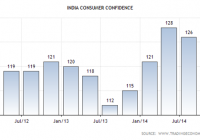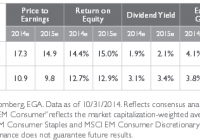Great ETF Picks For 2nd Half Of 2015
The global stock market ended the first half of the year in the green amid bouts of volatility and uncertainty. Though U.S. stocks, as represented by the S&P 500 index, have recorded their worst performance in five years, foreign investing took the credit. All the thanks go to ultra-easing policies across the globe in stark contrast to the U.S. Policy easing has however not helped to reduce volatility, which at the moment seems to be the only constant factor. The markets are grappling with the dire issue of unpaid debts in Greece and Puerto Rico, as well as the looming stock bubble in China. The developments in these areas will continue to unnerve investors as the second half unravels. There is the additional uncertainty of interest rate hike in the U.S. while a strong dollar will continue to play foul in the global financial world (read: ETF Strategies for 2H ). This is especially true as the U.S. economy has been on a moderate growth path as reflected in increased consumer confidence, higher spending power, renewed optimism in housing recovery and an improving job market. Meanwhile, waves of merger and acquisition deals will continue to brighten up the stock world. However, any downbeat data, including disappointing job growth, no wage increase, lower inflation, and less manufacturing and industrial activity, could delay rate hike or bring in more volatility. That being said, it seems that the second half will most likely resemble the first, extending the winning streak of the top performing ETFs of 1H. In fact, most of these ETFs have a top Zacks ETF Rank of 1 or “Strong Buy”, suggesting their continued outperformance for the rest of the year (read: Top Performing ETF Areas of 1H ). Below, we have highlighted some excellent ETF picks from three different categories given that there will be no major shift in fundamentals in the coming months. These funds should lead to big gains for investors and are worth a closer look heading into the second half. U.S. Sector ETFs Healthcare has been the soaring corner of the broad U.S. market so far this year, and this trend is likely to continue given the M&A boom, strong earnings growth, cost-cutting efforts, aging population and Obamacare. Combined with attractive fundamentals, the sector provides a defensive tilt to the portfolio due to its non-cyclical nature unaffected by global turmoil (read: 3 Buy-Ranked ETFs for a Healthy Portfolio ). Investor should focus on the iShares U.S. Healthcare Providers ETF (NYSEARCA: IHF ), which looks to offer exposure to the companies that provide health insurance, diagnostics and specialized treatment. Another alternative could be a small-cap play on the broader sector through the PowerShares S&P SmallCap Health Care Portfolio ETF (NASDAQ: PSCH ). Both funds gained 20.4% and 18.5%, respectively, so far this year. U.S. Style-Box ETFs 2015 is the year of growth as Americans are brimming with confidence instilled by their fat wallets and rising income. In particular, the small-cap space will likely be the major beneficiary of this trend as pint-sized stocks are closely tied to the U.S. economy and generate most of their revenues from the domestic market. This makes them safer bets than their large and mid-cap counterparts during a global turmoil. The Guggenheim S&P SmallCap 600 Pure Growth ETF (NYSEARCA: RZG ), which gained nearly 11% in the year-to-date frame, looks to be a compelling choice for the rest of the year. Global ETFs Global investing has been in vogue this year, reversing the past three-year trend. Though many developed and developing economies are still struggling with slower growth, Europe and Japan remained the bright spots and are gaining a lot of attention from investors this year. The iShares Currency Hedged MSCI Japan ETF (NYSEARCA: HEWJ ) and the WisdomTree Europe Hedged Equity ETF (NYSEARCA: HEDJ ) are the two popular picks in the broad Japanese and European stock markets. Both funds provide hedge against any fall in their respective currencies – yen and euro – which have been badly hammered. Moreover, rising concerns over Grexit have depressed many European ETFs in recent weeks, providing a solid entry point. HEWJ and HEDJ are up 17.6% and 10.5%, respectively, so far this year. In the developing world, China ETFs have been performing amazingly and are still on top at the midway mark, but it has been entering the bear market lately, dulling the appeal for Chinese products. On the other hand, the Indian economy has regained its strong momentum lately, after losing its shine this year. If this trend persists, the EGShares India Consumer ETF (NYSEARCA: INCO ) could be the best way to go. The fund added nearly 8% in the year-to-date time frame. Original post

